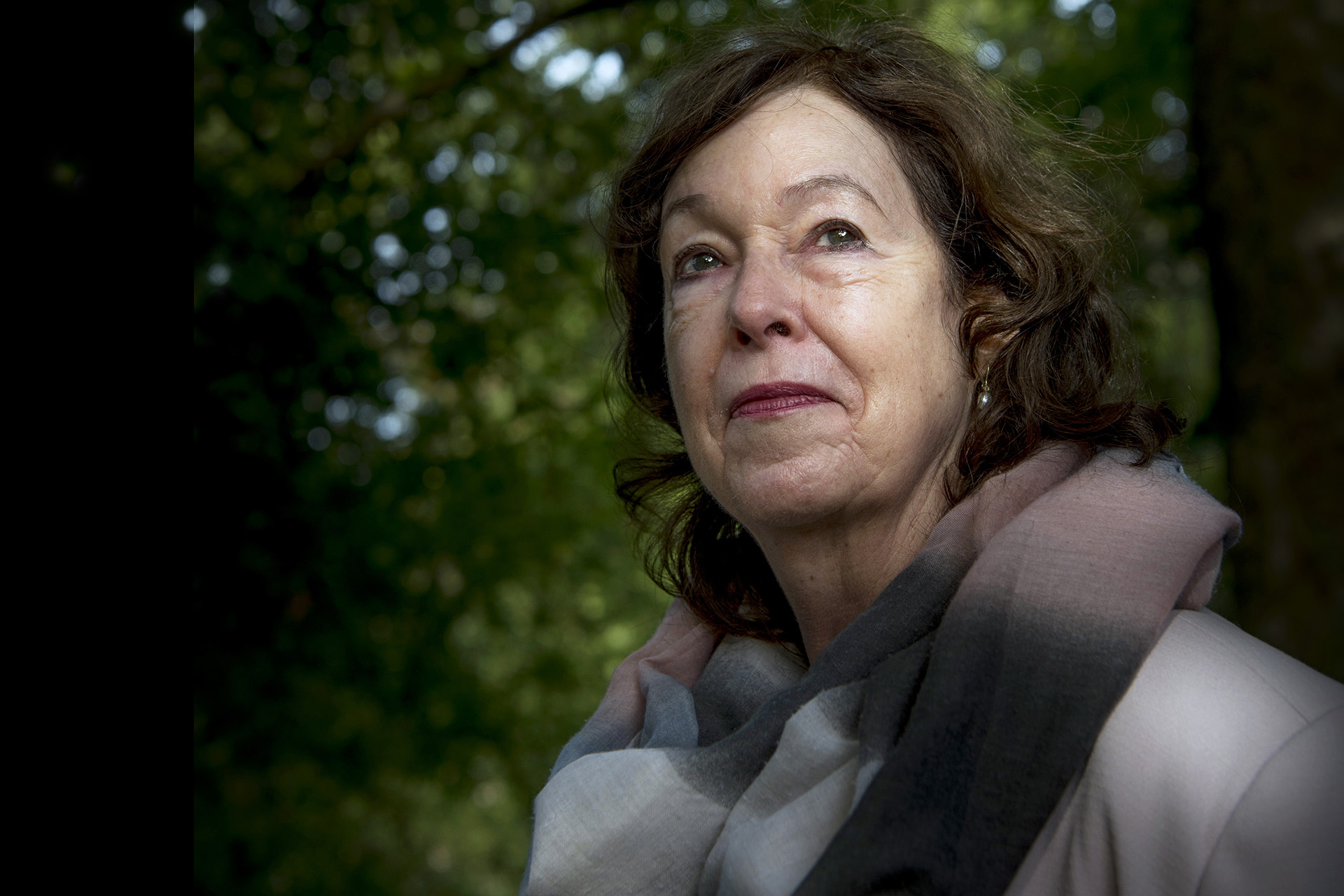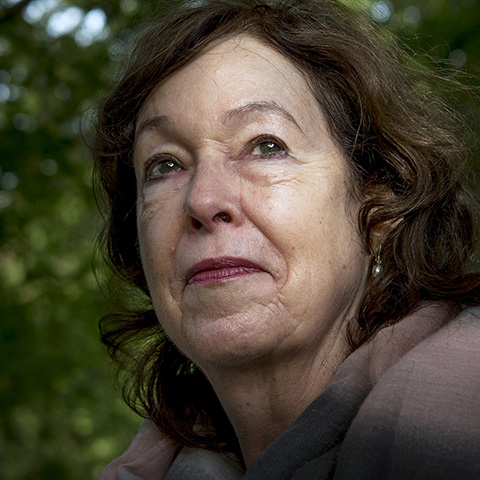
Marleen Janssen fights for the deafblind
No world beyond your arm’s reach
She remembers a little boy. He was ten years old and was born deaf. He understood some sign language, but couldn’t sign himself. He could communicate by pointing to drawings in a book. But then he started going blind and his entire world collapsed.
‘That little boy had to learn how to communicate all over again. He got a new teacher, but it didn’t go well. He became frustrated and started exhibiting challenging behaviour. He was angry!’
Making contact
But professor of deafblindness Marleen Janssen says it doesn’t have to be like this. The teacher and that boy can be taught to make contact again. Using recordings to analyse his behaviour, you can find ways for them to make contact, and to keep it. Everything he does has meaning: the way he leans back in his chair, the way his hands move, the way he holds his head.
‘We didn’t look at these things ten years ago’, says Janssen. ‘Before, we used to look at how someone shrugged, for example. But now we know that people can make at least fifty meaningful gestures in under a minute.’ Once you’ve spotted them all, you can use them to learn how to communicate with someone who can neither hear nor see. But take heed, says Janssen: ‘For people who are deaf and blind, the world ends at the end of their arm.’
The way he leans back in a chair, the way he holds his head – it all has meaning
They recorded the boy’s behaviour and coached his teacher, his counsellors, and his parents. They found a way to make it work. ‘We started turning the drawings he used to use into things he could touch. We used a piece of blanket to mean ‘going to bed’, while a chain link referred to the swings. We turned some of the pictures into 3D versions.’ Today, the little boy is communicating again. ‘This way works for him, but it’s different for everyone.’
Possibilities
The possibilities for communication strategies are numerous. Even someone who is completely deaf and completely blind can learn how to communicate. ‘We’ve shown that they can reach the cognitive level of at least a six-year-old’, says Janssen. ‘In many cases they can do even more. But you do have to help them.’
Helping deafblind people is Janssen’s mission. She wants to make sure they experience the world as much as possible and will do anything she can to help.
How’s life as a deafblind person? Rianne finds out.
She was a psychologist and counsellor at Kentalis, a health care institution for deafblind children, where she came into contact with them for the first time forty years ago. She met people who had been institutionalised for years on the assumption they were ‘mentally handicapped’ when in reality, they were really smart. But how do you communicate with someone who can’t talk and who can’t hear you?
In 2003, Janssen got her PhD in harmonious interaction with the deafblind. She realised that there hadn’t been any academic research on deafblindness. It terrified her to think what would happen if the practical knowledge she and her colleagues had accumulated about treatment was lost. So she decided to be the one to turn it into a research subject. ‘These people deserve it’, she says.
Institute for Deafblindness
She became an assistant professor in Groningen in 2004 and created a master programme two years later. Then two years after that, she became associate professor and got tenure. Last month, the first International Institute for Deafblindness was opened at the RUG, with Marleen Janssen at its head. And last week, she became a Knight in the Order of the Dutch Lion.
How does she feel about all of this? ‘I’m still working on it. But I do know that I’m thankful, for the timing as well. So much is happening in the health care sector. The budgets are always under pressure. But this shines a spotlight on the issue and that’s very important.
We make so many new laws but never consider how not to lose any expertise
There is a lot for her to be proud of. She has gathered a wealth of knowledge on a previously under-researched subject, she has supervised five PhD students who developed processes to help the deafblind, and today, there are eighty people out in the world who hold a master’s degree in the field.
But she’s still worried about the way the health care section is being restructured.
Health care for the deafblind falls under the Social Support Act. Their education, on the other hand, is classed as ‘appropriate education’. But healthcare and education for the deafblind go hand in hand, says Janssen; she fears that cutbacks will harm the important counselling that they need. ‘We make so many new laws these days, but we never consider how to make sure we don’t lose any expertise.’
Dark pit
So many things could be improved. Clients don’t just need one or two counsellors, they need ten. Imagine what it’s like, she says: living in the dark, barely able to hear if you hear anything at all, and you’re constantly surrounded by people.
Imagine that after a lot of work you finally manage to create a meaningful gesture you and your counsellor can use to communicate. But what if you fail in your efforts to communicate and are thrown back into that dark pit where you don’t understand anything? ‘If you can’t transfer those communication efforts, you can’t build a relationship’, she says.
Mistakes can undo progress in a matter of seconds. Inexperienced or improperly trained counsellors can do real damage in spite of their best intentions.
Deafblind children need counselling from birth; that is when they learn language
She recounts a time when she was just starting out. ‘I counselled this girl who had been deafblind since birth. I took her by the hand to go outside to the swings. It was raining and puddles were everywhere, so I wanted to make her walk around them.’
Janssen demonstrates, walking across the room with her arm around an imaginary child, avoiding imaginary puddles. ‘I was basically just dragging her!’ she says. ‘Honestly if people want to do this kind of work they should first spend a day with headphones and a blindfold on. Only then can they understand how vulnerable these people are. All those sudden touches. Food being put into your mouth.’
If the cutbacks end up affecting resources for the deafblind, she is determined to go back to The Hague to speak with anyone who has power to help.
Never give up
She has to convince the world that the deafblind deserve support; that the current knowledge about them should be safeguarded; that it’s amazing what they can do if they’re counselled from birth. ‘That’s when they start learning language. If you don’t start until they’re four or five, you’re already too late.’
She hastens to correct herself: no, it’s never too late. ‘These people want to keep learning.’ But you do lose time. And you shouldn’t have to.
Will Janssen succeed? In a time when so many vulnerable groups face budget cuts, does she even stand a chance? ‘You can never give up’, she says. Because her patients don’t give up. ‘They’ve got so much determination and resilience to keep communicating!’
So she tells herself to keep going. ‘Their lives are so much harder and they do it.’




